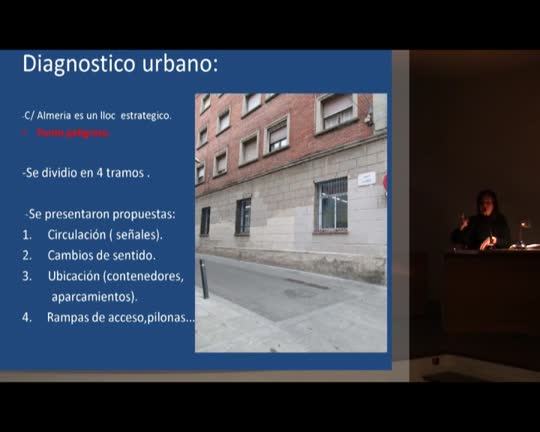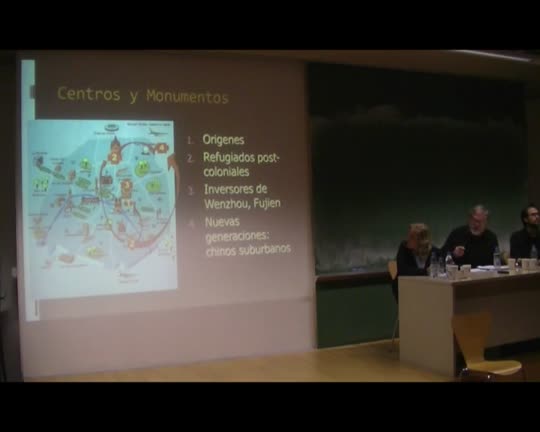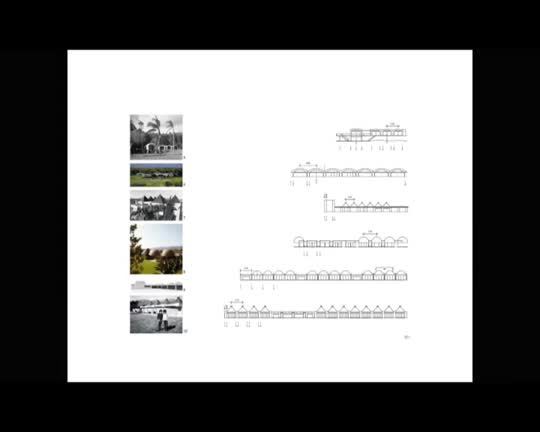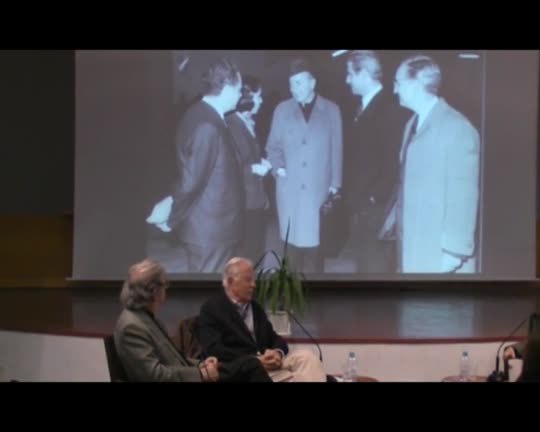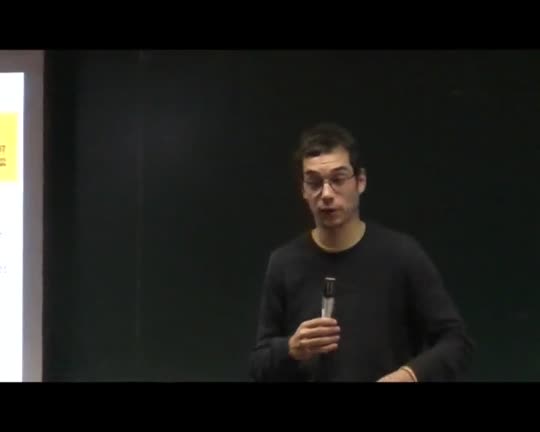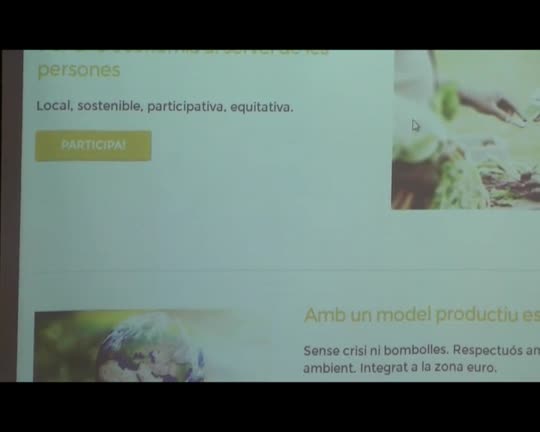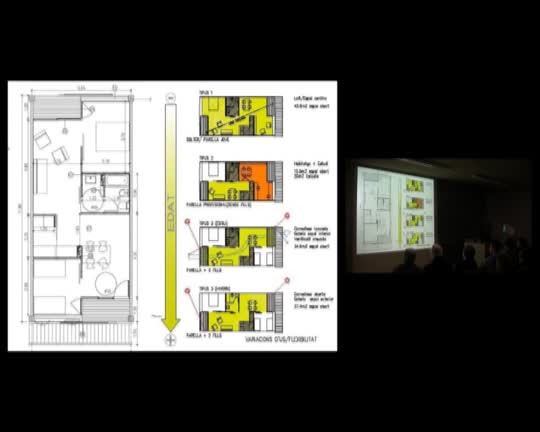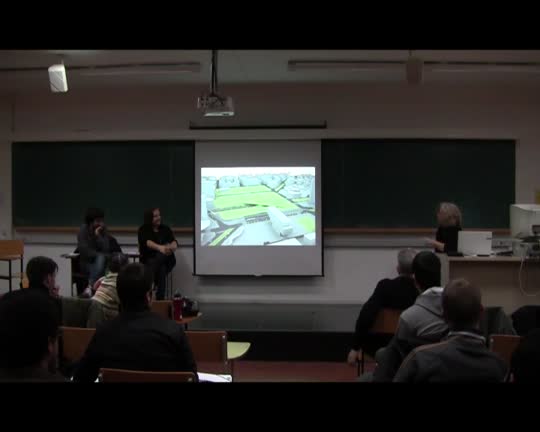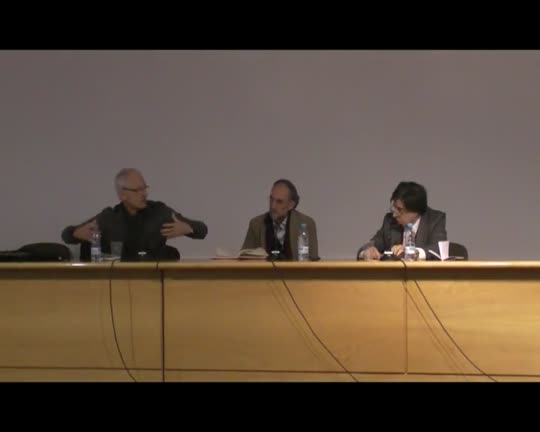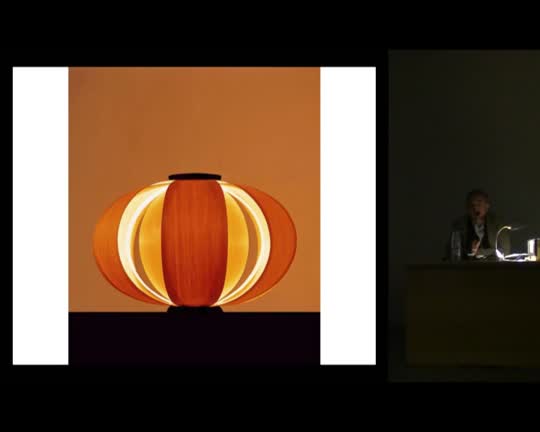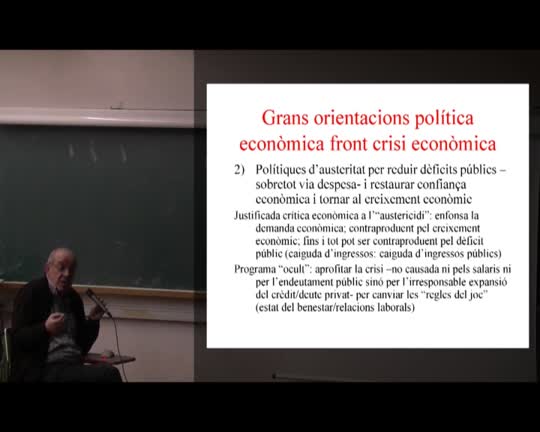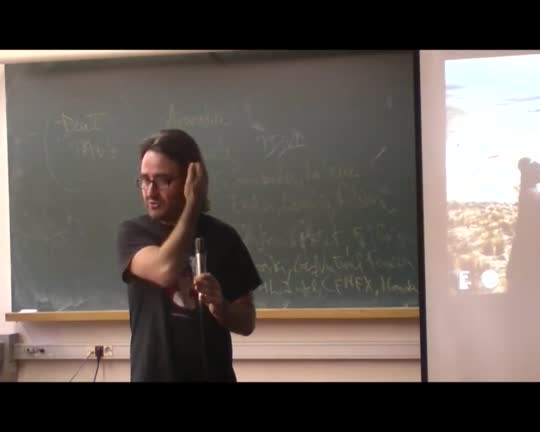Objectes multimèdia amb l’etiqueta: Escola Tècnica Superior d'Arquitectura de Barcelona
Resultats de la cerca
Inauguració de la Jornada "Urbanismo cotidiano: transformaciones urbanas con perspectiva de género". Presentació de Projectes.
Accés obert
13 de des. 2013
Presentació institucional de la Jornada "Urbanismo Cotidiano" a càrrec de Zaida Muxí, Professora de l'ETSAB i Lucía Rodrigo Peiró, Direcció de Relacions Internacionals de la Diputació de Barcelona.
Tot seguit presentació del projecte: "Auditoria de gènere en l'àmbit de l'urbanisme” per Adriana Ciocoletto, Col·lectiu Punt 6.
Taula de diàleg 1: "Estratègies en l'àmbit local".
Annabel Morera, Treballadora Social del Programa Municipal per a la Dona de l’Hospitalet: " Experiència Barri de Collblanc ‐ La Torrasa".
Merche Alvira Latorre: "Participació i Associacionisme, Experiència Barri de Sants, Barcelona".
Sara Ortíz Escalante, Col·lectiu Punt 6: "Experiència Auditoria de seguretat i gènere a l'Ajuntament de Barcelona".
Ània Pluma, Responsable d'Espai Públic, Diputació de Barcelona.
Modera: Blanca Gutiérrez, Col·lectiu Punt 6.
Tot seguit presentació del projecte: "Auditoria de gènere en l'àmbit de l'urbanisme” per Adriana Ciocoletto, Col·lectiu Punt 6.
Taula de diàleg 1: "Estratègies en l'àmbit local".
Annabel Morera, Treballadora Social del Programa Municipal per a la Dona de l’Hospitalet: " Experiència Barri de Collblanc ‐ La Torrasa".
Merche Alvira Latorre: "Participació i Associacionisme, Experiència Barri de Sants, Barcelona".
Sara Ortíz Escalante, Col·lectiu Punt 6: "Experiència Auditoria de seguretat i gènere a l'Ajuntament de Barcelona".
Ània Pluma, Responsable d'Espai Públic, Diputació de Barcelona.
Modera: Blanca Gutiérrez, Col·lectiu Punt 6.
Topologia de l'espai urbà contemporani
Accés obert
12 de des. 2013
Presentació de la sesió per Ricard Gratacós amb la intervenció de Beatriz Santamarina, Professora del Departament de Sociologia i d'Antropologia Social de la Universitat de València; Gary W. McDonough, Professor del Growth and Structure of Cities Department de Bryn Mawr University. Debat final que tanca la sessió i la II Jornada.
Es recorda el gir històric de l'antropologia cultural vers la ciutat. De l'altra, es revisen les lleis que regulen els seu espai.
Es recorda el gir històric de l'antropologia cultural vers la ciutat. De l'altra, es revisen les lleis que regulen els seu espai.
04. Jornada Antoni Bonet
Accés obert
11 de des. 2013
Tercera i última conferència del Centenari Coderch Moragas Bonet amb les ponències i debat amb: Fernando Álvarez Prozorovich, Juan Fernando Ródenas, Ricardo Flores i Jordi Roig. Organitza CULT, activitats culturals. Presentat per Ferran Sagarra, Director de l'ETSAB i Ariadna Perich.
03. Jornada Antoni de Moragas
Accés obert
10 de des. 2013
Jornada Antoni de Moragas, ponències i debat amb: Pepe Corredor-Matheos, Daniel Giralt-Miracle, Antoni de Moragas i André Ricard. Presentat per Ferran Sagarra, Director de l'ETSAB i Ariadna Perich, activitats Culturals Etsab.
Sistema financiero
Accés obert
5 de des. 2013
Conferència dins el cicle "Economia" de Xavier Teis, responsable de comunicació de la cooperativa de finances ètiques Coop57. Organitzat per l'Espai Social i de Formació d'Arquitectura (ESFA-ETSAB).
Sistema monetario
Accés obert
28 de nov. 2013
Susana Martín Belmonte, és economista independent (Universitat Autònoma de Madrid, 1993), escriptora i professional de l’economia digital. És autora del llibre “Nada está perdido” i impulsora del projecte Eurocat per a una moneda catalana http://euro-cat.cat/es/. Paral·lelament escriu un bloc en el que exposa diferents temes econòmics i planteja alternatives http://soberaniafinanciera.org/.
Conferència organitzada per ESFA, Espai Social i de Formació d'Arquitectura, dins el cicle "Finances"
Conferència organitzada per ESFA, Espai Social i de Formació d'Arquitectura, dins el cicle "Finances"
De la célula a la ciudad
Accés obert
27 de nov. 2013
Conferència de Judith Leclerc, Professora del Departament de Projectes Arquitectònics de l'ETSAB per l'assignatura Projectes III/M.
Debat sobre la transformació de les Glòries
Accés obert
27 de nov. 2013
Debat sobre la transformació de Les Glòries amb els experts del tema i seleccionats del concurs internacional.
02. Debat Jornada Coderch
Accés obert
25 de nov. 2013
Debat obert de la Jornada Coderch a càrrec d' Antonio Armesto, Carlos Ferrater i Víctor Rahola, del Departament de Projectes Arquitectònics de l'ETSAB. Cloenda de l'acte.
01. Jornada Coderch: Ponències
Accés obert
25 de nov. 2013
Presentació de la Jornada Coderch a càrrec de Ferran Sagarra, Director de l'ETSAB, i Ariadna Perich, Cultura ETSAB. A continuació les ponències: "Evocación de J.A. Coderch" d' Antonio Armesto (PA-ETSAB); "Jose Antonio Coderch de Sentmenat" de Carlos Ferrater (PA-ETSAB); "J.A. Coderch, de la casa Garriga Nogués a la Casa Tàpies, 1947-1961" de Víctor Rahola (PA-ETSAB).
Crisis ecológica. Crisis económica
Accés obert
20 de nov. 2013
Conferència de Jordi Roca Jusmet, Professor d'Economia de Recursos Naturals del Departament de Teoria Econòmica de la Universitat de Barcelona, per al cicle Economia organitzat per ESFA, Espai Social per la Formació en Arquitectura.
Conferència organitzada per ESFA, Espai Social i de Formació d'Arquitectura, dins el cicle "Contexto General"
Conferència organitzada per ESFA, Espai Social i de Formació d'Arquitectura, dins el cicle "Contexto General"
Transnacionales y Derechos Humanos
Accés obert
14 de nov. 2013
Conferència de Jesús Carrión, economista, Professor a l’ETSEIB i membre del col·lectiu RETS. Analitza amb exemples les maneres com, sota el criteri bàsic de la maximització de beneficis, les empreses transnacionals trepitgen en molts casos els drets humans de milions de persones al món.
Conferència organitzada per ESFA, Espai Social i de Formació d'Arquitectura, dins el cicle "Contexto General"
Conferència organitzada per ESFA, Espai Social i de Formació d'Arquitectura, dins el cicle "Contexto General"


